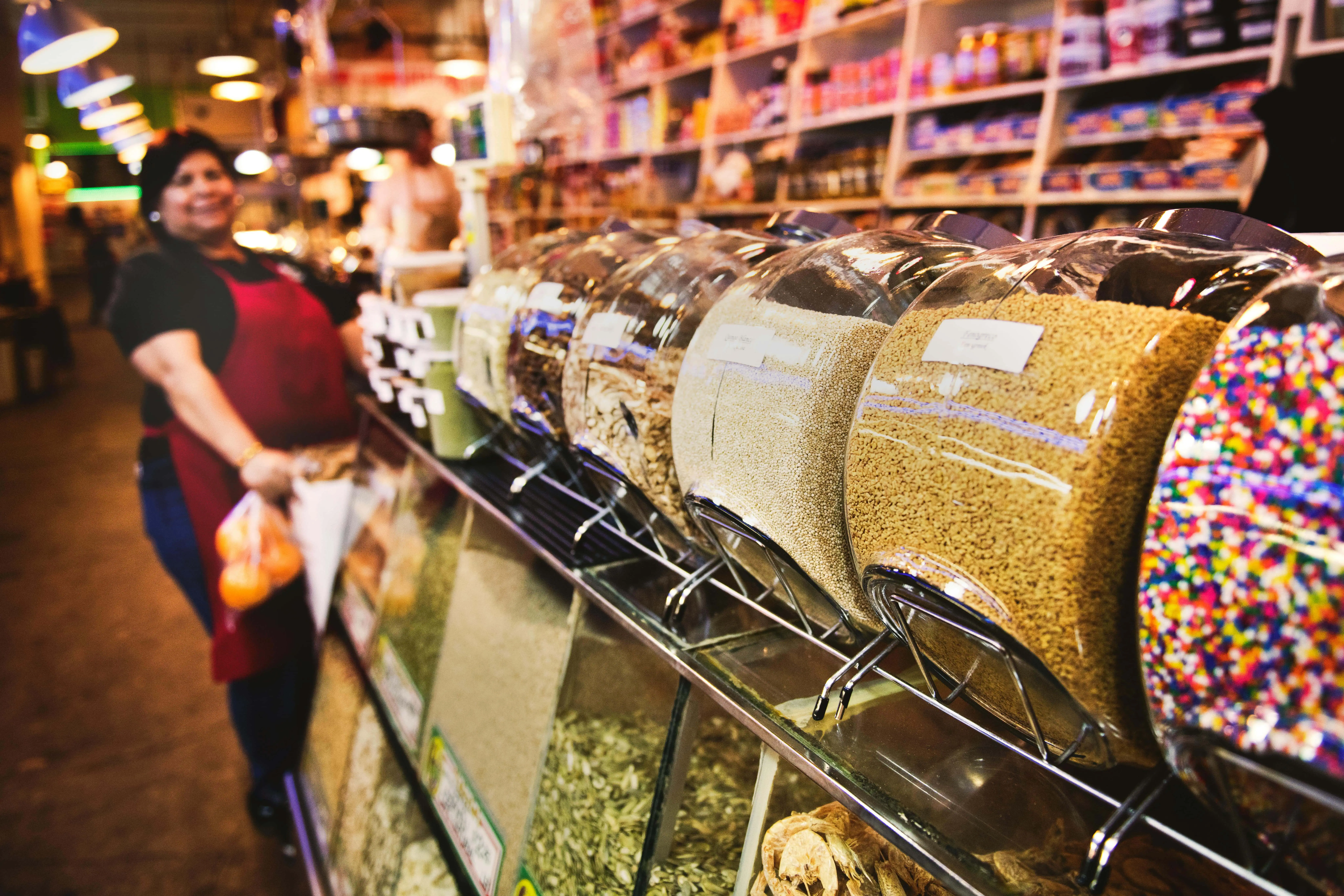Are you starting a career in merchandising? You’re embarking on a path that combines art, science, and business in unique and fascinating ways. Merchandiser jobs span a range of activities, from designing appealing store layouts to analyzing sales data, each critical in shaping the retail experience. This article provides a comprehensive guide to understanding merchandising, the skills you’ll need, and the diverse job roles available in this sector.
As an entry-level job seeker or someone curious about the field, you’ll find valuable insights into how merchandisers directly influence shopping experiences and business success. Plus, we delve into how embracing diversity enhances your career and enriches the retail industry as a whole. Prepare to uncover the exciting world of merchandising where creativity meets strategy in driving retail forward.
Understanding Merchandiser Jobs
Merchandiser jobs are pivotal in the retail industry. They ensure that consumers find products appealingly and sensibly displayed. A merchandiser ensures items are stocked, labeled correctly, and positioned to maximize sales. Moreover, merchandisers play a crucial role in the shopping experience by improving product visibility and accessibility.
What Does a Merchandiser Do?
A merchandiser’s tasks can be pretty varied, depending on their workplace:
- Product Placement: Strategically arranging products to capture customer attention.
- Inventory Management: Keeping track of stock levels and placing orders as needed.
- Pricing: Ensure prices are correctly displayed and reflect any promotions or sales.
- Collaboration: Working closely with store managers and staff to coordinate displays and marketing strategies.
Where Do Merchandisers Work?
Merchandisers can be found in diverse settings, each offering unique challenges and opportunities.
- Retail Stores: From large chains to boutiques, ensuring products are attractively presented.
- Supermarkets: Focusing on product turnover and positioning to promote sales.
- Online: Managing virtual displays and product listings for e-commerce platforms.
Why Are Merchandiser Roles Important?
Merchandisers significantly impact a business’s success. Effective merchandising can increase sales, customer satisfaction, and business growth. Additionally, understanding diverse markets is crucial. You can learn more about Understanding Latino Community Diversity to tailor product offerings better to meet various cultural preferences.
Primarily, the merchandiser aims to bridge the gap between products and consumers. They ensure that products are presented in a way that speaks to the clientele’s needs and preferences. For more insights on these roles and their broad impact, consider exploring retail sales roles outlined by the Bureau of Labor Statistics.
Essential Skills and Qualifications for Merchandisers
Merchandisers need unique skills and qualifications to effectively display inventory and sales strategies. These tools help with product management and enhance customer interaction and sales.
Essential Skills for Merchandisers
To succeed in merchandiser jobs, several skills are particularly critical:
- Organizational Skills: Effective inventory and space management require a high level of organization.
- Attention to Detail: Precision in setting prices and arranging products impacts sales directly.
- Creativity: Innovative display designs can significantly attract more customers.
- Communication: Clear, effective communication with team members and managers ensures cohesive operation.
Qualifications and Training
While formal education requirements may vary, specific qualifications can be particularly beneficial:
- Educational Background: A high school diploma is typically necessary, with further qualifications in retail management or marketing being advantageous.
- Training Programs: Many companies offer on-the-job training, but attending seminars and webinars can be beneficial.
- Technology Proficiency: Familiarity with inventory management software and data entry is increasingly essential.
Continuing Education and Certifications
Merchandisers might consider ongoing education and certifications to keep up with the dynamic retail industry. Advancing their understanding of diverse consumer bases is crucial. Our article on bilingualism benefits in the U.S. outlines how language skills can expand market reach and customer service excellence.
Types of Merchandiser Jobs Available
Several merchandiser jobs exist, each catering to different aspects of retail and distribution. The diversity of roles allows for various career paths in merchandising.
Retail Merchandisers
Retail merchandisers focus on brick-and-mortar stores, ensuring products are displayed attractively and efficiently.
- In-store: They arrange products on shelves and create promotional displays.
- Planogram Compliance: They follow specific layouts designed to maximize sales.
Field Merchandisers
Field merchandisers travel between multiple locations to set up displays and ensure store consistency.
Digital Merchandisers
With the rise of e-commerce, digital merchandisers manage online product presentations.
- Website Layouts: They optimize how products appear on websites.
- Online Campaigns: They coordinate with marketing to drive online sales.
Visual Merchandisers
Visual merchandisers specialize in the aesthetic presentation of goods. Like store design, they create captivating visual themes that enhance the shopping experience.
Each type of merchandising offers unique challenges and opportunities. Moreover, it allows individuals to use their strengths in different areas of the retail industry effectively, making merchandiser jobs versatile and rewarding career options.
Day in the Life of a Merchandiser
A merchandiser’s day is dynamic and diverse, involving various tasks that require attention to detail and strategic thinking.
Morning Routine
The day often starts with a review of inventory and sales reports. This helps merchandisers plan their tasks effectively.
- Store Walkthrough: Checking displays, product availability, and signage for accuracy.
- Team Briefing: Discuss the day’s objectives and promotions with store staff.
Afternoon Duties
The focus shifts towards execution and interaction during the afternoon.
- Implementing Changes: Adjusting layouts according to new deliveries or sales trends.
- Customer Service: Assisting customers and gathering feedback on product placement and engagement.
Wrapping Up
The close of the day involves setting the stage for the next business day.
- Final Inspections: Ensuring all products are correctly labeled and stocked.
- Report Preparation: Updating sales and inventory records to report back to management.
Integrating cultural insights also helps tailor the shopping experience for diverse demographic groups. This integration increases satisfaction and fosters loyalty among customers. For a broader understanding, see our article on February global festivals, highlighting how festivals can influence product themes and consumer engagement.
Challenges and Rewards in Merchandising
While merchandiser jobs offer dynamic and engaging work environments, they come with challenges and rewards.
Common Challenges
Merchandisers often face several hurdles in their daily roles:
- Rapid Changes: Staying updated with market trends and consumer preferences requires agility.
- Physical Demands: The job can be physically demanding, involving extensive walking and lifting.
- Coordination: Ensuring alignment across different departments can be challenging.
Rewards of Being a Merchandiser
The role of a merchandiser is not just challenging but also highly rewarding:
- Impact on Sales: Directly influencing store sales and profitability.
- Creativity: Each day offers a chance to enhance store layouts and displays creatively.
- Variety: No two days are the same, providing variety in daily tasks and challenges.
Understanding the challenges and embracing the rewards make a career in merchandising fulfilling. Furthermore, the role offers unique insights into the nuances of market diversity, enhancing career growth. For insight into employment diversity, consider reading about the cultural significance of food, which explores how diverse culinary practices impact consumer choices and product turnover.
Additionally, staying informed on labor statistics can help merchandisers understand employment trends within the industry. Many resources like Glassdoor offer useful data on employment growth, job outlook, and wages for retail workers.
Impact of Diversity in Merchandising
Diversity in merchandising enriches the retail environment by fostering inclusivity and broadening consumer appeal. Embracing a diverse workforce and diverse product range can significantly impact business success.
Cultural Diversity and Consumer Needs
Merchandisers who understand and implement diversity can better meet the varied needs of their customer base:
- Product Selection: Offering products that cater to different cultural tastes and preferences.
- Marketing Campaigns: Creating inclusive advertising that resonates with a broader audience.
Advantages of a Diverse Merchandising Team
Having a team of merchandisers from various backgrounds can enhance creative strategies and decision-making:
- Varied Perspectives: Diverse teams bring unique insights that can lead to innovative merchandising solutions.
- Enhanced Communication: Teams that mirror the diversity of the clientele can communicate more effectively with customers.
Furthermore, diversity in merchandising is not just about ethnicity or culture. It also includes embracing different age groups, genders, and physical abilities, ensuring everyone’s voice is heard and valued.
Opportunities for Growth in Merchandiser Careers
Merchandiser jobs offer substantial career advancement and professional development opportunities, making them a viable long-term career option.
Career Pathways in Merchandising
Starting as a merchandiser opens various paths to higher positions:
- Lead Merchandiser: Overseeing a team of merchandisers and managing more significant projects.
- Merchandising Manager: In charge of strategic decisions and department success.
- Buyer: Focused on product selection and vendor negotiation to optimize inventory.
Skills Advancement and Professional Development
As merchandisers progress in their careers, they often acquire skills that are transferable across many roles in retail:
- Leadership: Managing teams and learning to motivate staff effectively.
- Strategic Planning: Developing long-term strategies that align with business goals.
- Analytical Skills: Understanding market trends and consumer behavior to make informed decisions.
Continued education and training are key to climbing the merchandising ladder. Participating in industry-relevant workshops and courses, such as those offered by the National Retail Federation, can significantly enhance a merchandiser’s skill set. Merchandisers looking to expand their global outreach might also benefit from understanding cross-cultural marketing strategies.
FAQs
Here are some common questions about merchandiser jobs to help you understand this career path better.
What qualifications do I need to start in merchandising?
A high school diploma is often sufficient, but additional courses in marketing or business can be beneficial.
How can I excel as a merchandiser?
Focusing on strong organizational skills, creativity, and effective communication will enhance your performance.
Are there opportunities for advancement in merchandising?
Yes, many start as entry-level merchandisers and move to managerial roles or become buyers with experience and additional training.
What is the average salary for a merchandiser?
Salaries vary widely depending on location, experience, and company size.
Conclusion
Merchandiser jobs are crucial in the retail industry, bridging the gap between products and consumers. As explored throughout this article, the profession requires diverse skills, offers various specializations, and presents opportunities for career growth. In addition, embracing diversity within merchandising can significantly enhance business outcomes and broaden market reach.
For those inspired by merchandising’s dynamic nature and potential to impact sales and customer experiences, now is the time to act. Join Diversity Employment and upload your resume to discover diversity and inclusion jobs, connect with like-minded professionals, and further your career in this vibrant field. Embrace the chance to bring creativity and strategic insight to the retail world and to positively influence the industry.




